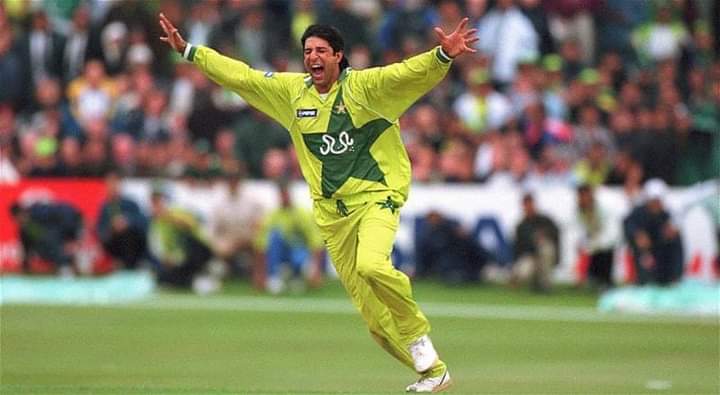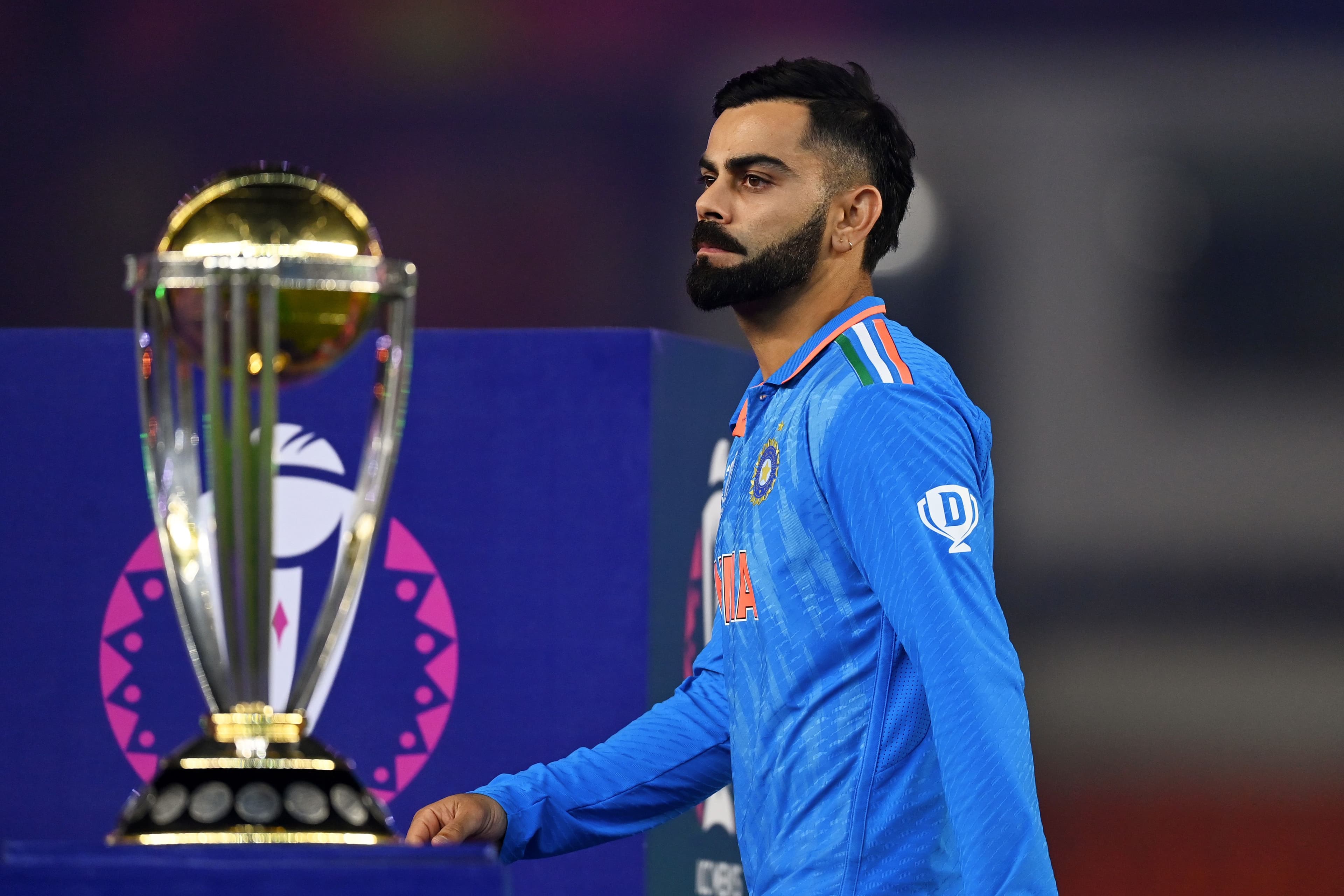Cricket
Best Bowling Average in ODI Cricket History
Bowling Average or runs conceded per wicket by a bowler is an important factor in ODI cricket. Know which bowlers feature in the top 10 list.

Image Credit: South Africa Cricket Team Twitter (X) Account
One-Day International (ODI) cricket has seen a lot of great bowlers since its inception in 1971. The Bowling Average is calculated by dividing the total number of runs conceded by the total number of wickets taken by a bowler. In other words, the bowling average is runs per wicket by a bowler. ODI format requires the bowlers to contain the runs and take wickets for their respective teams, hence making bowling average an important factor in the game.
We will have a look at some of the great bowlers with the best bowling average in ODI cricket.
BEST BOWLING AVERAGE IN ODI CRICKET
PLAYERS FROM TEST PLAYING NATIONS (MINIMUM 200 WICKETS)
| PLAYER | WICKETS | INNINGS | AVERAGE | ECONOMY |
|---|---|---|---|---|
| ALLAN DONALD (SA) | 272 | 162 | 21.78 | 4.15 |
| SAQLAIN MUSHTAQ (PAK) | 288 | 165 | 21.78 | 4.29 |
| GLENN MCGRATH (AUS) | 380 | 247 | 21.98 | 3.87 |
| MITCHELL STARC (AUS) | 236 | 121 | 22.96 | 5.21 |
| MUTTIAH MURALITHARAN (SL) | 523 | 334 | 23.07 | 3.92 |
| BRETT LEE (AUS) | 380 | 217 | 23.36 | 4.76 |
| WASIM AKRAM (PAK) | 502 | 351 | 23.52 | 3.89 |
| WAQAR YOUNIS (PAK) | 416 | 258 | 23.84 | 4.68 |
| CURTLY AMBROSE (WI) | 225 | 175 | 24.12 | 3.48 |
| SHAUN POLLOCK (SA) | 387 | 291 | 24.31 | 3.65 |
Allan Donald – 21.78

Nicknamed ‘White Lightning’ the South African fast bowler has the best bowling average in ODI cricket with bowlers taking over 200 wickets in the format. Donald made his debut in 1991 and played his last ODI during the 2003 Cricket World Cup at home. He finished with 272 wickets in 162 innings with a superb economy of 4.15. Known to move the ball both ways, Donald’s best figures in the format are 6/23 which he picked up against Kenya in 1996. He started his ODI career with a 5-wicket haul against India at the iconic Eden Gardens stadium in Kolkata and is considered the finest fast bowler of all time to ever play for South Africa.
Saqlain Mushtaq - 21.78

Known as the master of ‘doosra’, Saqlain Mushtaq in his playing day one of the fiercest off-spinners to ever play the game. He is known as the first spinner to master the ‘doosra’ delivery that turns away from the right-hander with the action of an off-spinner. He got 288 wickets in the format spending 21.78 runs per wicket and taking 6 five-wicket hauls. He made his debut at Gujranwala against Sri Lanka and 1995 and played his last ODI against South Africa in 2003. He was the fastest bowler to complete 100 ODI wickets getting to the mark in 53 innings, but the record has been bettered by four other bowlers.
Glenn McGrath - 21.98

Known for his accurate line and length and ability to make the ball move on his command, Glenn McGrath featured in 250 ODIs for Australia and is the joint-highest wicket-taker for them with 380 wickets at an amazing average of 21.98. Nicknamed ‘Pigeon’, McGrath made his ODI debut in 1993 against South Africa and finished his career as a three-time World Cup winner with his final ODI being the 2007 World Cup final against Sri Lanka where he finished as the tournament’s leading wicket-taker (26 wickets) and was awarded the player of the tournament. His best figures in the format are 7/15 against Namibia in the 2003 World Cup.
Mitchell Starc - 22.96

Having made his ODI debut in 2010, Mitchell Starc is the only bowler who is currently playing international cricket in the top 10 list. His average of 22.96 makes him a modern-time great with 236 wickets to his name. The left-arm seamer can bowl quick and move the ball both ways using his height. He is known as a big-match player with excellent performances in the 3 World Cups he played taking the Australian side to victory on two occasions. He picked up 22, 27 and 16 wickets respectively in the 2015, 2019 and 2023 World Cups. Australia were crowned champions in 2015 and 2023.
Muttiah Muralitharan - 23.07

The highest wicket-taker in the history of one-day internationals and across all formats of international cricket, no bowler comes closer to Muralitharan’s remarkable feat of 534 ODI scalps and 1347 wickets across the format. His average in ODIs is a brilliant 23.07 and gets even better across all formats at 22.86. He was part of the World Cup-winning Sri Lanka side in 1996 and was the team’s leading wicket-taker with 15 scalps in the 2011 edition where Sri Lanka finished as runners-up. His best figures in the format are 7/30 which he picked against India in 2000.
Brett Lee - 23.36

One of the fastest bowlers to have ever played the game, Brett Lee formed a formidable bowling partnership with Glenn McGrath for Australia across the two formats and picked up as many wickets as McGrath with an average of 23.36. Lee made his ODI debut versus Pakistan in 2000 and stands eighth in the list of all-time wicket-takers in ODI. He is also the fastest to get 300 and 350 wickets in ODIs as he claimed 300 wickets in 171 matches and got his 350th in his 202nd ODI. With an iconic run-up, bowling action and celebration, Binga as he is popularly known, could consistently clock 160 kph on the bowling radar with impeccable lines and lengths. He was an important part of Australia’s World Cup-winning campaigns in 2003 and 2007.
Wasim Akram - 23.52

One of the greatest left-arm seamers to have ever played the game. Wasim Akram was a great exponent of reverse swing bowling taking Pakistan cricket to good heights. He was also a part of the only World Cup-winning Pakistani side in 1992. In the 2003 World Cup, Akram became the first-ever bowler in the world to complete 500 wickets in the format and finished with a tally of 502 scalps. No one has taken more wickets ‘out bowled’ than his 176. His best figures in ODIs are 5/15 picked against Zimbabwe in 1993. He played his last ODI against Zimbabwe in the 2003 World Cup.
Waqar Younis - 23.84

Akram’s contemporary Waqar Younis almost shares a like-for-like average in the ODI format and is very close to lots of ODI bowling records with his bowling partner. Having started his career in 1989 against West Indies, Waqar finished in the same game as Akram in the 2003 World Cup taking 416 wickets with his right arm swinging deliveries featuring 262 times for Pakistan. His memorable performance of 7/36 against England in 2001 at Leeds is the best bowling figure for a captain in one-day internationals. In 2002 playing against South Africa, he dismissed Jonty Rhodes for 98 becoming the fastest man to achieve the feat of 400 wickets in ODI cricket.
Curtly Ambrose - 24.12

One of the most fearsome bowlers featuring for West Indies. Sir Curtly Ambrose was known for his pace and menacing bouncers deceiving the greatest of batters in the world with his accuracy. He made his debut against Pakistan in 1988 and played 176 ODIs till 2000. Amongst the 4 five-wicket hauls he picked in his career; his best was 5/17 against Australia at the Melbourne Cricket Ground during the 1988 Benson & Hedges World Series. He helped West Indies win the game by 34 runs and was the player of the match. He is only behind his contemporary Courtney Walsh in the list of leading wicket-takers in ODIs for West Indies taking 225 scalps.
Shaun Pollock - 24.31

Hailing from a family known to produce international cricketers, Shaun Pollock made his ODI debut as a 22-year-old against England in 1996. When he finished in February 2008, he had the most number of wickets for South Africa with 387 scalps to his name, 115 more than Allan Donald who sits in second position. A tremendous average of 24.31 and a superb economy of 3.65 add to the number in a career spanning 303 matches and 5 five-wicket hauls. Pollock was also adjudged 9 times as the player of the series which is the highest number of any fast bowler winning the award.
Recommended Articles

Dillip has over two decades of experience in creating sports content. As the Sports Editor of SportsBoom, Dillip brings in a wealth of experience and expertise to the role. Dillip has worked with leading sports broadcasters and sports web content portals in Asia. He is an adept storyteller and has a special liking for data stories. He has a keen interest in data analysis and uncovering insights from large datasets. He loves to tell the story with rich and compelling data visualisation.


